Wondering if you should create a whole new team or just add a channel? And what are best practices for organizing channels in Microsoft Teams? In this article we break down the key channel features and share some best practices for efficient conversations in channels.
What are Microsoft Teams channels for?
Channels in Microsoft Teams are conversations that you have with your team members. They represent a specific topic, department, or a project a team is working on. In this manner, channels guide users through their conversations and allow to focus discussions.
Channels structure your workplace by separating not only conversations, but also information stored in Files tab and applications that are configured individually for each channel.
Let’s have a closer look at all the main features of channels in Microsoft Teams.
Key features of Microsoft Teams channels
General channel
By default, when you create a new team, you automatically get a General channel. You can’t rename, remove, or hide it.
General channel is a perfect place to have conversations around miscellaneous topics that don’t fall under any category.

It can also be used for explaining the purpose of the team, adding guidelines, specifying responsibilities of each team member, etc. You can do that by creating guidelines in a SharePoint site and adding it as a tab or by using Wiki tab that appears by default.
Channel moderation
Team owners can control who makes new posts and replies to posts in a channel by setting up moderation. They can also assign other team members to be channel moderators.
This can be practical for sharing announcements and important information. You may want to create a dedicated channel for that, let’s call it Announcement, and set up moderation preferences to restrict replies. In this scenario, the team owner adds specific team members as moderators so that only they could post announcements.
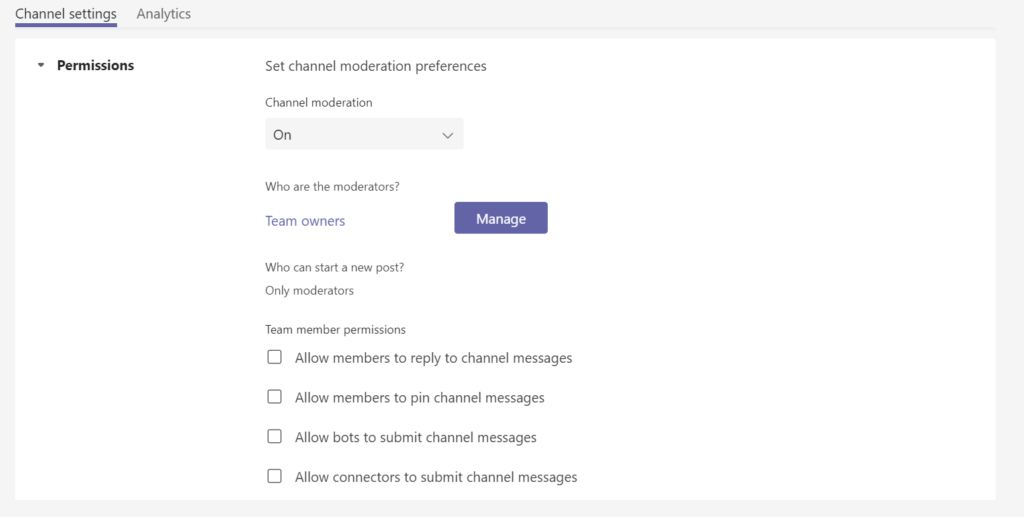
Tabs in channels
In Microsoft Teams, you can integrate Office 365 and third-party apps into your Teams environment through tabs. By default, each time you create a new channel you get three standard channels – Posts, Files and Wiki.
Posts are where your team conversations occur.
Files serve as your document library.
Wiki can be used for specifying the team’s rules, best practices, etc. You can learn more about how to get the most of Wiki tab here.

You may want to add more tabs – those can be both files stored in your library, for example a PowerPoint presentation, and apps that your team use most frequently such as Power Automate, Planner, Forms, Salesforce, etc.
We suggest you pin as tabs only the most important apps and documents that your team members use on daily basis. It is not recommended to add too many tabs in order not to switch the focus from the most relevant content.
Private channels
Private channels are focused spaces for collaboration within your team. Only team owners and members of the private channels can see and participate in them. Anyone, including guest users, can be members of a private channel given that they are already members of the team.

You may want to use private channels to limit collaboration only to a certain group of people without having to create a separate team.
For example, if you have a team dedicated to a specific project and wish to discuss its budget, you can create a dedicated private channel that will include only the project manager, accountants, and the customer.
Choose between standard, private, or shared channels based on the level of collaboration, visibility, and security you need for your content.
Learn more about private channels.
Shared channels
Recently Microsoft announced a new capability – Microsoft Teams Connect with shared channels. It enables you to share channels with anyone, both inside and outside your organization.
You no longer need to invite a guest user to the entire team. From now on, you can share files, start conversations, as well as set up video calls with anybody right from a specific shared channel.
Head over to this article to find out specific use cases for shared channels.

Channel meetings
You can have open audio and video conversations with your team members directly in channels.
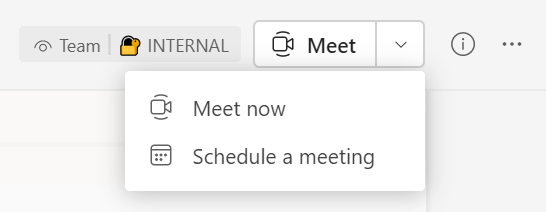
To start a meeting choose the right channel and click on Meet on the top right and then select Meet now or Schedule a meeting.
When you join a channel meeting everyone in your team will be able to see there is a meeting on and who is participating. You can also add participants once the meeting is started.
During the meeting, you will automatically see a meeting chat in your chat list.
Connectors
You may want to configure connectors for specific channels in your teams. Connectors keep your team informed by delivering content and service updates directly into the channel. For example, you can receive updates from such popular connectors as Google Analytics, GitHub, Trello, RSS and the list goes on.
Learn how to add a connector to a channel in your team.
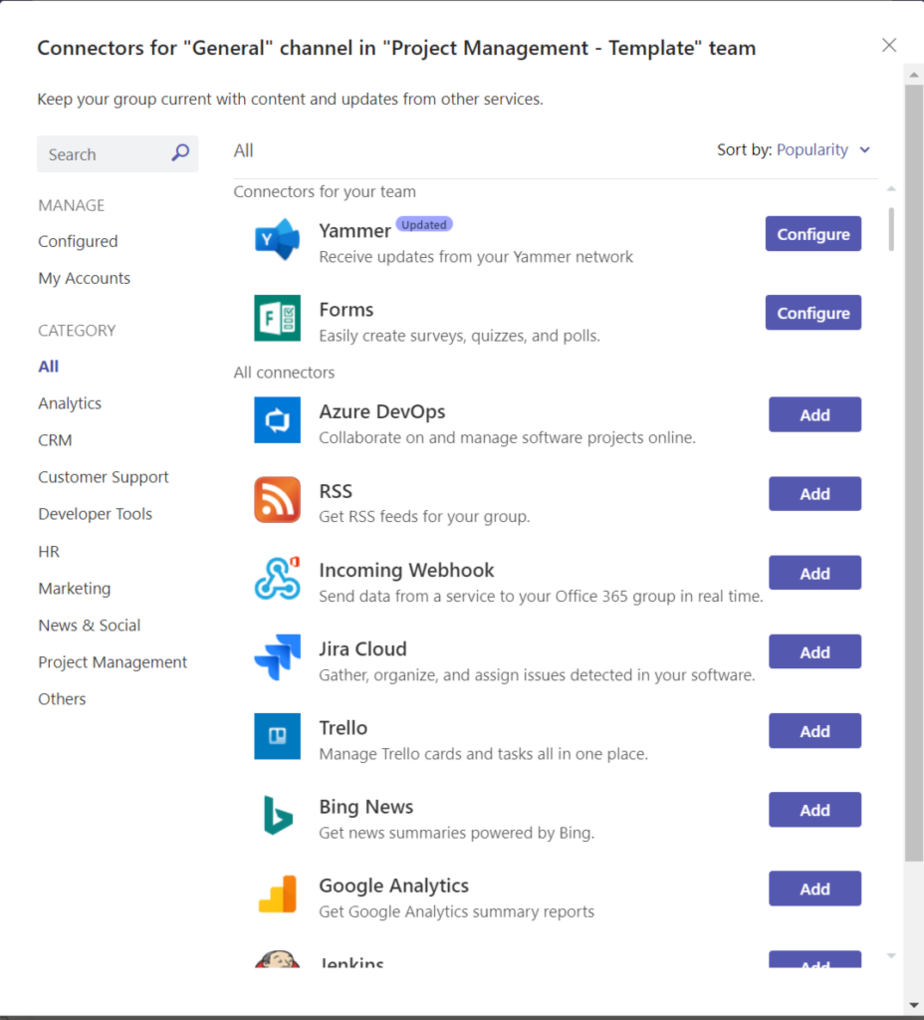
Other features
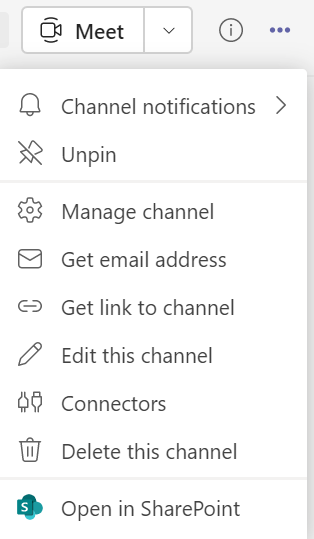
There are a few other features worth mentioning about channels in Teams. Let’s click on […] More options at the top right of your channel and see what else we can do.
Channel notifications
You can configure your channel notifications and choose whether you’d like to stay informed about channel posts.
Pin
If there’s a channel that you most frequently use in Teams – for me, personally, it’s our Marketing channel – you can pin it to get faster access to it. This way, each time you click on Teams you’ll immediately land on this channel.
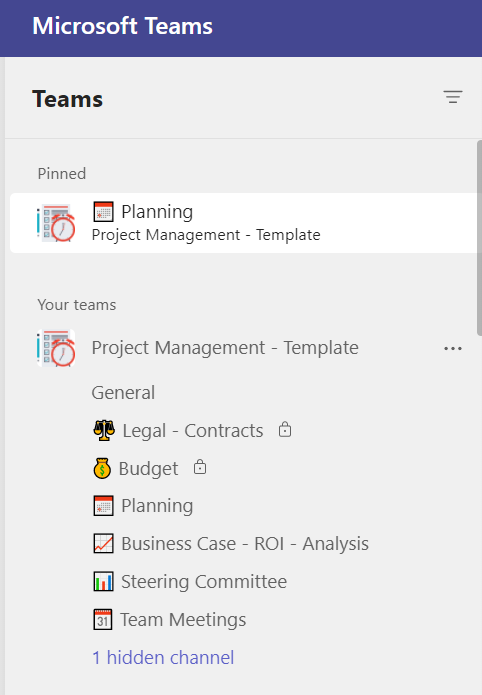
Get email address
Did you know that you can send an email directly to a Teams channel? This can be useful if you wish to share an important email with the entire team and discuss further actions.
Microsoft Teams channels best practices
Now, let’s discuss some of the best practices to get the most of Microsoft Teams channels.
Understanding when to create a channel in Microsoft Teams
Many Microsoft Teams users face a dilemma: do I create a new channel or a team when a new subject arises?
There are two types of teams with respect to collaboration processes:
1. Teams at the organizational level (the entire company, department, branch, etc.)
2. Teams for repetitive collaborative processes (crisis management, project management, product launch, onboarding process, etc.)
You can learn more about each category in our blog post Microsoft Teams Use Cases: a List of 30+ Examples.
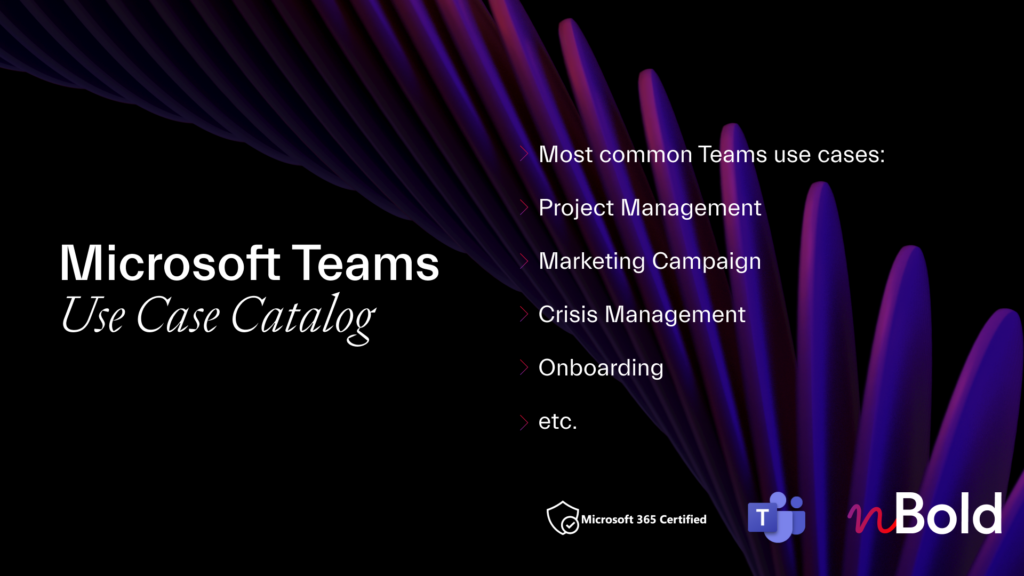
Catalog of Microsoft Teams Use Cases
Discover the most common Microsoft Teams scenarios and use cases! Project Management, Marketing Campaigns, Sales Deal Room, and much more.
We will focus on the second category since it’s the one that poses more doubts.
Each new project, deal, case, or account that your organization is working on may deserve a separate team. It will depend on the collaboration intensity. For example, if the collaboration intensity is very low, a new conversation in a channel may even be enough.
So, how to define collaboration intensity? Firstly, look at the velocity of information exchange. Secondly, take into consideration the size of the team.
If there are 50 people working on a project, then there will definitely be subjects that need separate discussions. Therefore, the best practice here is to create a collaboration space for your team to focus entirely on the project completion. However, if there are just two people working on a project, this will no longer be necessary.
There are no strict rules for team or channel creation. All you need is to test what works best for your team.
If your collaboration requires creating a new team for each project, channels of these teams can represent stages or aspects of project resolution. If we take our project management scenario, channel examples may be:
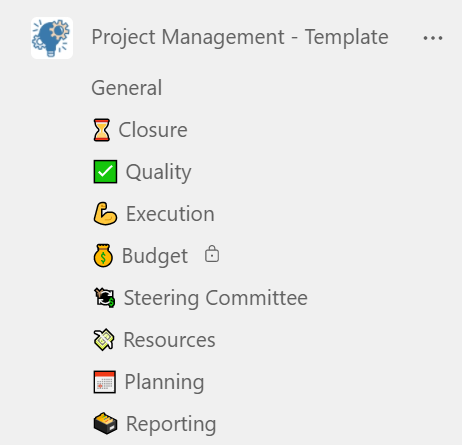
- Planning
- Quality
- Execution
- Budget
- Steering Committee
- Resources
- Closure
- Etc.
Conversation in a channel vs chat in Microsoft Teams
Many users prefer to use group chats to discuss work projects, share insights and leave feedback. This is a more familiar way of communication – similar to popular instant messengers like WhatsApp – and it’s ‘closer’ to users.
However, communicating in channels sometimes makes much more sense when it comes to team collaboration.
Group chats are private, and the content shared there is only visible to its members.
Meanwhile, channel conversations in Microsoft Teams are accessible to any team member. For instance, if one employee leaves the company or simply goes on vacation, their colleague who will be taking over can simply go through channel posts, files and tabs and get familiar with the previous work in a more efficient way. If they were not a member of the group chat, they might not be able to see the chat history.
Additionally, in channels you can add more apps as tabs. Thus, if you need to collaborate with your team through Planner, you will need to do it through a dedicated channel, not a group.
Finally, conversations in channels are more structured since traditionally each post starts with a headline summarizing the message. This makes it much easier to navigate through messages and find the right information.
To sum up, you may want to use group chats to discuss matters concerning specific users, share information and get instant replies. Channel conversations, however, are preferable when it comes to collaborating making decisions on the team level.
Highlighting important information
There are several ways you can highlight key information in your channels.
One way to do so is by pinning channel conversations. In this way, important content and updates will always be in front of users’ eyes. For example, if you have a Marketing Campaign channel, you may want to pin a message that outlines the steps that need to be taken to complete a particular campaign.
Another way to highlight important content is a channel is by adding tabs. It will save you time on navigating through different apps and files and will increase visibility of key information. For example, you can add Planner as a tab to any team that uses this task management tool. By doing so, they will always stay on top of their tasks and can easily track their progress without having to toggle between apps.
Make sure the right people see the messages you post by @mentioning them. Otherwise, not everyone will see your message, only those who enabled notifications for that particular channel.
For easier navigation among all the posts in a channel, we also highly recommend adding a subject to each post. It will appear as a bold title, making it easier to understand what the post is about without going into detail.
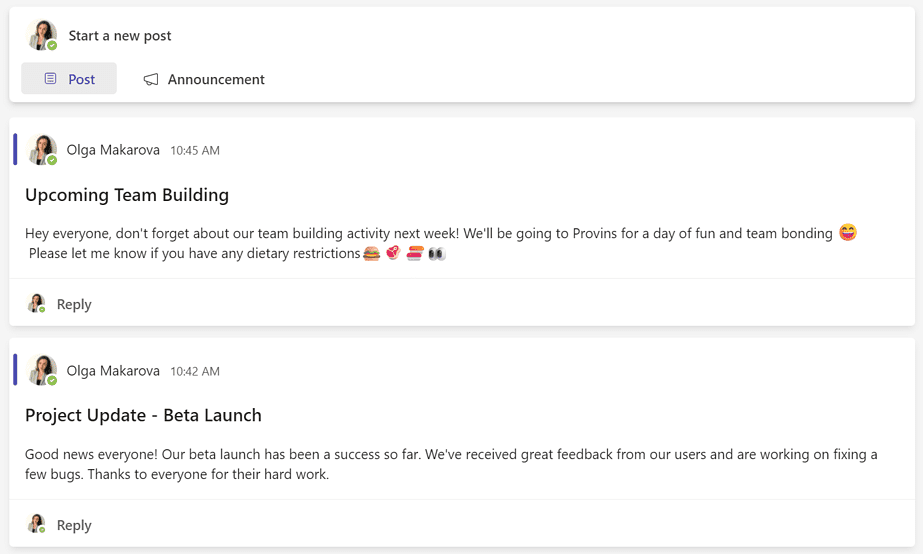
Channel name examples
When it comes to channel names in Microsoft Teams, there are some best practices to follow.
You may want to avoid naming your channels after certain people who own the channel or put the date of the channel creation. Channel names should be clear and simple, giving your team members the idea of what exactly should be discussed in there. To make things more fun you may add emojis to your channel names that represent the subject.
We will take a few collaboration scenarios as examples of how you may want to name your channels.
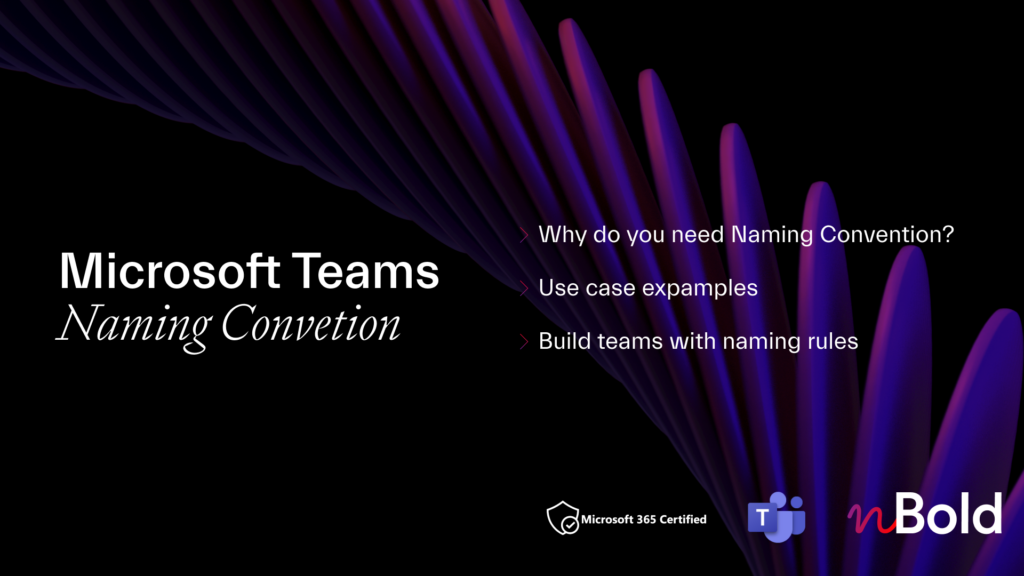
White Paper with free Teams Naming Convention examples
- Use Case Examples
- Microsoft Teams naming convention solutions
- Naming Convention at Teams Templates Level
- Fixed and Dynamic Naming Convention
1. Team for the entire organization

If you’re running a small company, it makes more sense to have a single team for the entire staff – just like we do at nBold.
Your channels may represent your organization’s departments and key activities. For example, at nBold we have 21 channels, so each activity we perform in the company falls into a separate category.
Here are some channel examples for this type of team:
- Sales
- Marketing
- Customer Support
- Partners
- Ideas
- Website
- Security
- Competitors
- Legal
- Product
- Internal tools
- Fun
Think about all the topics that your employees discuss and create a separate channel for each of them.
2. Team per department
For a medium-size and large company, it’s recommended to have separate teams for each department to keep the workspace more structured. Plus, if you keep your departments simply as channels within one team that will mean that all your employees will have access to the content shared in every channel (except for private channels). That might be risky for security reasons and might not comply with internal regulations.
Let’s say, you are a B2B Saas company and you want to have a separate team for your customer support department. Here are some channel name examples you may want to use:
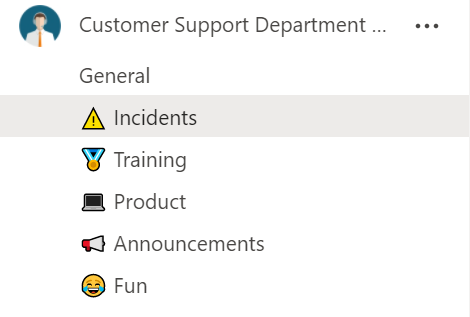
- Product
- Incidents
- Training
- Announcements
- Fun
The list may go on, of course, depending on the specifics of the work of your team. But it covers the main areas customer support focus on.
3. Team per case/project/account/process
Having just a single team for the entire company and even for different departments might not be enough, however. To collaborate efficiently on new projects the best practice is to create a dedicated team and include all the players that should be involved – and oftentimes these are not just members of a single department. You may need to invite your partners, customers, contractors, or specialists from different departments of branches of your organization.
Having a team dedicated to a specific project, case, account, or any process will facilitate collaboration among the people involved in the matter.
Let us demonstrate a few channel name examples for such teams in Microsoft Teams.
Project Management

- Closure
- Quality
- Execution
- Budget
- Steering Committee
- Resources
- Planning
- Resources
Onboarding Process
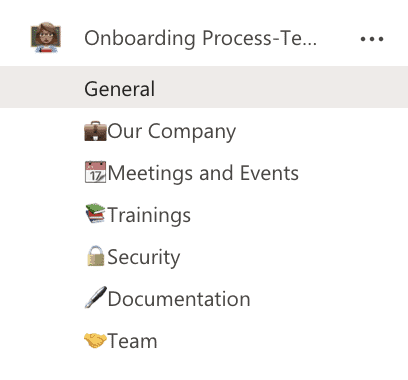
- Our company
- Meetings and Events
- Training
- Documentation
- Security
- Team
Account Management
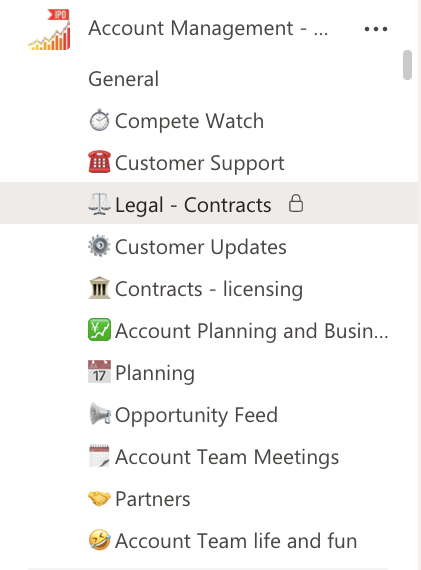
- Compete Watch
- Customer Support
- Contracts
- Planning
- Team Meetings
- Opportunity Feed
- Partners
Litigation Case
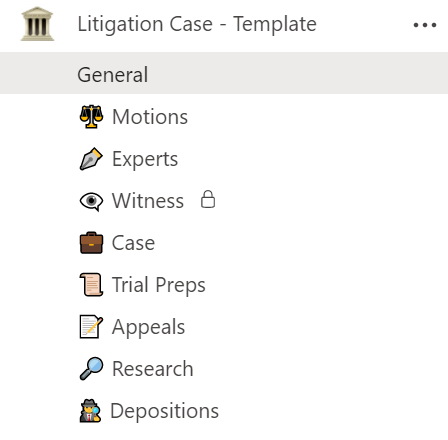
- Motions
- Experts
- Witnesses
- Case
- Trial Preps
- Appeals
- Research
- Depositions
Final thoughts
There’s a way to keep your teams and channels in Microsoft Teams consistent and structured across the whole organization. Each time your users create a new team, all the channels are already built, all the tabs are configured, and the required documents are automatically uploaded. This and more is possible with Collaboration Templates by nBold.
